Navigate between the tabs to learn more about how to use and maintain the Cool Cube™.
- Place panels in a freezer until all PCM turns solid (i.e. 2 hrs. @ -15°C). Shake to verify.
- Transfer panels into a fridge at least 3 hours before use. Panels may be stored in the fridge until needed for assembly or the PCM melts.*
- Before assembly, shake panels to verify PCM is solid. If liquid is heard, restart at step 2a to ensure longest hold time. Using liquid panels, or panels with a solid/liquid combination, decreases hold time.
The time varies between prep methods:
- Method A: ≈ 5 hours
- Method B: ≈ 24 hours
- Method C: ≈ 3 hours
In the user guide we recommend Method A, although all methods work. Choose the method that works best with your schedule.
If you store the PCM panels in your refrigerator they will be available to use whenever you need them. Shake the panels to see if they are solid. If they are slushy your refrigerator is too warm. If the panels are slushy they will still work, but the hold times will be decreased.
Prep Method A:
- Place panels in a freezer until all PCM turns solid (i.e. 2 hrs. @ -15°C). Shake to verify.
- Transfer panels into a fridge at least 3 hours before use. Panels may be stored in the fridge until needed for assembly or the PCM melts.*
- Before assembly, shake panels to verify PCM is solid. If liquid is heard, restart at step 2a to ensure longest hold time. Using liquid panels, or panels with a solid/liquid combination, decreases hold time.
Click here for a detailed guide to all of the prep methods.
- Place panels in a freezer until all PCM turns solid (i.e. 2 hrs. @ -15°C). Shake to verify.
- Transfer panels into a fridge at least 3 hours before use. Panels may be stored in the fridge until needed for assembly or the PCM melts.*
- Before assembly, shake panels to verify PCM is solid. If liquid is heard, restart at step 2a to ensure longest hold time. Using liquid panels, or panels with a solid/liquid combination, decreases hold time.
The time varies between prep methods:
- Method A: ≈ 5 hours
- Method B: ≈ 24 hours
- Method C: ≈ 3 hours
In the user guide we recommend Method A, although all methods work. Choose the method that works best with your schedule.
If you store the PCM panels in your refrigerator they will be available to use whenever you need them. Shake the panels to see if they are solid. If they are slushy your refrigerator is too warm. If the panels are slushy they will still work, but the hold times will be decreased.
Prep Method A:
- Place panels in a freezer until all PCM turns solid (i.e. 2 hrs. @ -15°C). Shake to verify.
- Transfer panels into a fridge at least 3 hours before use. Panels may be stored in the fridge until needed for assembly or the PCM melts.*
- Before assembly, shake panels to verify PCM is solid. If liquid is heard, restart at step 2a to ensure longest hold time. Using liquid panels, or panels with a solid/liquid combination, decreases hold time.
Click here for a detailed guide to all of the prep methods.
- Place panels in a freezer until all PCM turns solid (i.e. 2 hrs. @ -15°C). Shake to verify.
- Transfer panels into a fridge at least 3 hours before use. Panels may be stored in the fridge until needed for assembly or the PCM melts.*
- Before assembly, shake panels to verify PCM is solid. If liquid is heard, restart at step 2a to ensure longest hold time. Using liquid panels, or panels with a solid/liquid combination, decreases hold time.
The time varies between prep methods:
- Method A: ≈ 5 hours
- Method B: ≈ 24 hours
- Method C: ≈ 3 hours
In the user guide we recommend Method A, although all methods work. Choose the method that works best with your schedule.
If you store the PCM panels in your refrigerator they will be available to use whenever you need them. Shake the panels to see if they are solid. If they are slushy your refrigerator is too warm. If the panels are slushy they will still work, but the hold times will be decreased.
Prep Method A:
- Place panels in a freezer until all PCM turns solid (i.e. 2 hrs. @ -15°C). Shake to verify.
- Transfer panels into a fridge at least 3 hours before use. Panels may be stored in the fridge until needed for assembly or the PCM melts.*
- Before assembly, shake panels to verify PCM is solid. If liquid is heard, restart at step 2a to ensure longest hold time. Using liquid panels, or panels with a solid/liquid combination, decreases hold time.
Click here for a detailed guide to all of the prep methods.
- Place panels in a freezer until all PCM turns solid (i.e. 2 hrs. @ -15°C). Shake to verify.
- Transfer panels into a fridge at least 3 hours before use. Panels may be stored in the fridge until needed for assembly, or the PCM melts.*
- Before assembly, shake panels to verify PCM is solid. If liquid is heard, restart at step 2a to ensure longest hold time. Using liquid panels, or panels with a solid/liquid combination, decreases hold time.
The time varies between prep methods:
- Method A: ≈ 5 hours
- Method B: ≈ 24 hours
- Method C: ≈ 3 hours
In the user guide we recommend Method A, although all methods work. Choose the method that works best with your schedule.
If you store the PCM panels in your refrigerator they will be available to use whenever you need them. Shake the panels to see if they are solid. If they are slushy your refrigerator is too warm. If the panels are slushy they will still work, but the hold times will be decreased.
Prep Method A:
- Place panels in a freezer until all PCM turns solid (i.e. 2 hrs. @ -15°C). Shake to verify.
- Transfer panels into a fridge at least 3 hours before use. Panels may be stored in the fridge until needed for assembly or the PCM melts.*
- Before assembly, shake panels to verify PCM is solid. If liquid is heard, restart at step 2a to ensure longest hold time. Using liquid panels, or panels with a solid/liquid combination, decreases hold time.
Click here for a detailed guide to all of the prep methods.
- Place panels in a freezer until all PCM turns solid (i.e. 2 hrs. @ -15°C). Shake to verify.
- Transfer panels into a fridge at least 3 hours before use. Panels may be stored in the fridge until needed for assembly, or the PCM melts.*
- Before assembly, shake panels to verify PCM is solid. If liquid is heard, restart at step 2a to ensure longest hold time. Using liquid panels, or panels with a solid/liquid combination, decreases hold time.
The time varies between prep methods:
- Method A: ≈ 5 hours
- Method B: ≈ 24 hours
- Method C: ≈ 3 hours
In the user guide we recommend Method A, although all methods work. Choose the method that works best with your schedule.
If you store the PCM panels in your refrigerator they will be available to use whenever you need them. Shake the panels to see if they are solid. If they are slushy your refrigerator is too warm. If the panels are slushy they will still work, but the hold times will be decreased.
Prep Method A:
- Place panels in a freezer until all PCM turns solid (i.e. 2 hrs. @ -15°C). Shake to verify.
- Transfer panels into a fridge at least 3 hours before use. Panels may be stored in the fridge until needed for assembly or the PCM melts.*
- Before assembly, shake panels to verify PCM is solid. If liquid is heard, restart at step 2a to ensure longest hold time. Using liquid panels, or panels with a solid/liquid combination, decreases hold time.
Click here for a detailed guide to all of the prep methods.
- Place panels in a freezer until all PCM turns solid (i.e. 2 hrs. @ -15°C). Shake to verify.
- Transfer panels into a fridge at least 3 hours before use. Panels may be stored in the fridge until needed for assembly, or the PCM melts.*
- Before assembly, shake panels to verify PCM is solid. If liquid is heard, restart at step 2a to ensure longest hold time. Using liquid panels, or panels with a solid/liquid combination, decreases hold time.
The time varies between prep methods:
- Method A: ≈ 5 hours
- Method B: ≈ 24 hours
- Method C: ≈ 3 hours
In the user guide we recommend Method A, although all methods work. Choose the method that works best with your schedule.
If you store the PCM panels in your refrigerator they will be available to use whenever you need them. Shake the panels to see if they are solid. If they are slushy your refrigerator is too warm. If the panels are slushy they will still work, but the hold times will be decreased.
Prep Method A:
- Place panels in a freezer until all PCM turns solid (i.e. 2 hrs. @ -15°C). Shake to verify.
- Transfer panels into a fridge at least 3 hours before use. Panels may be stored in the fridge until needed for assembly or the PCM melts.*
- Before assembly, shake panels to verify PCM is solid. If liquid is heard, restart at step 2a to ensure longest hold time. Using liquid panels, or panels with a solid/liquid combination, decreases hold time.
Click here for a detailed guide to all of the prep methods.
- Place panels in a freezer until all PCM turns solid (i.e. 2 hrs. @ -15°C). Shake to verify.
- Transfer panels into a fridge at least 3 hours before use. Panels may be stored in the fridge until needed for assembly, or the PCM melts.*
- Before assembly, shake panels to verify PCM is solid. If liquid is heard, restart at step 2a to ensure longest hold time. Using liquid panels, or panels with a solid/liquid combination, decreases hold time.
The time varies between prep methods:
- Method A: ≈ 5 hours
- Method B: ≈ 24 hours
- Method C: ≈ 3 hours
In the user guide we recommend Method A, although all methods work. Choose the method that works best with your schedule.
If you store the PCM panels in your refrigerator they will be available to use whenever you need them. Shake the panels to see if they are solid. If they are slushy your refrigerator is too warm. If the panels are slushy they will still work, but the hold times will be decreased.
Prep Method A:
- Place panels in a freezer until all PCM turns solid (i.e. 2 hrs. @ -15°C). Shake to verify.
- Transfer panels into a fridge at least 3 hours before use. Panels may be stored in the fridge until needed for assembly or the PCM melts.*
- Before assembly, shake panels to verify PCM is solid. If liquid is heard, restart at step 2a to ensure longest hold time. Using liquid panels, or panels with a solid/liquid combination, decreases hold time.
Click here for a detailed guide to all of the prep methods.
- Place panels in a freezer until all PCM turns solid (i.e. 2 hrs. @ -15°C). Shake to verify.
- Transfer panels into a fridge at least 3 hours before use. Panels may be stored in the fridge until needed for assembly, or the PCM melts.*
- Before assembly, shake panels to verify PCM is solid. If liquid is heard, restart at step 2a to ensure longest hold time. Using liquid panels, or panels with a solid/liquid combination, decreases hold time.
The time varies between prep methods:
- Method A: ≈ 5 hours
- Method B: ≈ 24 hours
- Method C: ≈ 3 hours
In the user guide we recommend Method A, although all methods work. Choose the method that works best with your schedule.
If you store the PCM panels in your refrigerator they will be available to use whenever you need them. Shake the panels to see if they are solid. If they are slushy your refrigerator is too warm. If the panels are slushy they will still work, but the hold times will be decreased.
Prep Method A:
- Place panels in a freezer until all PCM turns solid (i.e. 2 hrs. @ -15°C). Shake to verify.
- Transfer panels into a fridge at least 3 hours before use. Panels may be stored in the fridge until needed for assembly or the PCM melts.*
- Before assembly, shake panels to verify PCM is solid. If liquid is heard, restart at step 2a to ensure longest hold time. Using liquid panels, or panels with a solid/liquid combination, decreases hold time.
Click here for a detailed guide to all of the prep methods.
- Store panels in an ultra-low freezer* so PCM is solid (i.e. 48 hrs. @ -30°C).
- Before assembly, shake panels to verify PCM is solid. If liquid is heard, restart at step 2a to ensure longest hold time. Using liquid panels, or panels with a solid/liquid combination, deceases hold time
Store in coldest area of freezer; space out panels for good airflow; if stacking, insert a spacer (pencil, tongue depressor, etc.) in between each.
Click here for a detailed guide to all of the prep methods.
The time varies between prep methods:
- Method A: ≈ 24 hours
- Method B: ≈ 3 hours
- Method C: ≈ 24 hours
In the user guide we recommend Method A, although all methods work. Choose the method that works best with your schedule and available resources.
If you store the PCM panels in your freezer they will be available to use whenever you need them. Shake the panels to see if they are solid. If they are slushy your freezer is not cold enough. If the panels are slushy they will still work, but the hold times will be decreased.
Prep Method A:
- Store panels in an ultra-low freezer* so PCM is solid (i.e. 48 hrs. @ -30°C).
- Before assembly, shake panels to verify PCM is solid. If liquid is heard, restart at step 2a to ensure longest hold time. Using liquid panels, or panels with a solid/liquid combination, deceases hold time
Store in coldest area of freezer; space out panels for good airflow; if stacking, insert a spacer (pencil, tongue depressor, etc.) in between each.
Click here for a detailed guide to all of the prep methods.
- Store panels in an ultra-low freezer* so PCM is solid (i.e. 48 hrs. @ -30°C).
- Before assembly, shake panels to verify PCM is solid. If liquid is heard, restart at step 2a to ensure longest hold time. Using liquid panels, or panels with a solid/liquid combination, deceases hold time
Store in coldest area of freezer; space out panels for good airflow; if stacking, insert a spacer (pencil, tongue depressor, etc.) in between each.
Click here for a detailed guide to all of the prep methods.
The time varies between prep methods:
- Method A: ≈ 24 hours
- Method B: ≈ 3 hours
- Method C: ≈ 24 hours
In the user guide we recommend Method A, although all methods work. Choose the method that works best with your schedule and available resources.
If you store the PCM panels in your freezer they will be available to use whenever you need them. Shake the panels to see if they are solid. If they are slushy your freezer is not cold enough. If the panels are slushy they will still work, but the hold times will be decreased.
Prep Method A:
- Store panels in an ultra-low freezer* so PCM is solid (i.e. 48 hrs. @ -30°C).
- Before assembly, shake panels to verify PCM is solid. If liquid is heard, restart at step 2a to ensure longest hold time. Using liquid panels, or panels with a solid/liquid combination, deceases hold time
Store in coldest area of freezer; space out panels for good airflow; if stacking, insert a spacer (pencil, tongue depressor, etc.) in between each.
Click here for a detailed guide to all of the prep methods.
- Store panels in an ultra-low freezer* so PCM is solid (i.e. 24 hrs. @ -25°C).
- Before assembly, shake panels to verify PCM is solid. If liquid is heard, restart at step 2a to ensure longest hold time. Using liquid panels, or panels with a solid/liquid combination, deceases hold time
Store in coldest area of freezer; space out panels for good air flw; if stacking, insert a spacer (pencil, tongue depressor, etc.) in between each.
The time varies between prep methods:
- Method A: ≈ 24 hours
- Method B: ≈ 3 hours
- Method C: ≈ 24 hours
In the user guide we recommend Method A, although all methods work. Choose the method that works best with your schedule and available resources.
If you store the PCM panels in your freezer they will be available to use whenever you need them. Shake the panels to see if they are solid. If they are slushy your freezer is not cold enough. If the panels are slushy they will still work, but the hold times will be decreased.
Prep Method A:
- Store panels in an ultra-low freezer* so PCM is solid (i.e. 48 hrs. @ -30°C).
- Before assembly, shake panels to verify PCM is solid. If liquid is heard, restart at step 2a to ensure longest hold time. Using liquid panels, or panels with a solid/liquid combination, deceases hold time
Store in coldest area of freezer; space out panels for good airflow; if stacking, insert a spacer (pencil, tongue depressor, etc.) in between each.
Click here for a detailed guide to all of the prep methods.
- Store panels in an ultra-low freezer* so PCM is solid (i.e. 48 hrs. @ -30°C).
- Before assembly, shake panels to verify PCM is solid. If liquid is heard, restart at step 2a to ensure longest hold time. Using liquid panels, or panels with a solid/liquid combination, decreases hold time
Store in the coldest area of the freezer; space out panels for good air flow; if stacking, insert a spacer (pencil, tongue depressor, etc.) in between each.
The time varies between prep methods:
- Method A: ≈ 24 hours
- Method B: ≈ 3 hours
- Method C: ≈ 24 hours
In the user guide we recommend Method A, although all methods work. Choose the method that works best with your schedule and available resources.
If you store the PCM panels in your freezer they will be available to use whenever you need them. Shake the panels to see if they are solid. If they are slushy your freezer is not cold enough. If the panels are slushy they will still work, but the hold times will be decreased.
Prep Method A:
- Store panels in an ultra-low freezer* so PCM is solid (i.e. 48 hrs. @ -30°C).
- Before assembly, shake panels to verify PCM is solid. If liquid is heard, restart at step 2a to ensure longest hold time. Using liquid panels, or panels with a solid/liquid combination, deceases hold time
Click here for a detailed guide to all of the prep methods.
- Store panels in a lab incubator* between 15-20°C so PCM is solid (i.e. 24 hrs. @ 15°C). Shake to verify.
- Before assembly, shake panels to verify PCM is solid. If liquid is heard, restart at step 2a to ensure longest hold time. Using liquid panels, or panels with a solid/liquid combination, deceases hold time.
Space out panels for good air flow; if stacking, insert a spacer (pencil, tongue depressor, etc.) between each.
The time varies between prep methods:
- Method A: ≈ 3 hours / Keep product cool (in extreme heat)
- Method B: ≈ 4 hours / Keep product cool (in extreme heat)
- Method C: ≈ 3 hours / Keep product warm (in cold conditions)
- Method D: ≈ 3 hours / Keep product warm (in cold conditions)
In the user guide we recommend Method A, although all methods work. Choose the method that works best for your needs, with your schedule and available resources.
Prep Method A:
- Store panels in a lab incubator* between 15-20°C so PCM is solid (i.e. 24 hrs. @ 15°C). Shake to verify.
- Before assembly, shake panels to verify PCM is solid. If liquid is heard, restart at step 2a to ensure longest hold time. Using liquid panels, or panels with a solid/liquid combination, deceases hold time.
Click here for a detailed guide to all of the prep methods.
- Store panels in a lab incubator* between 15-20°C so PCM is solid (i.e. 24 hrs. @ 15°C). Shake to verify.
- Before assembly, shake panels to verify PCM is solid. If liquid is heard, restart at step 2a to ensure longest hold time. Using liquid panels, or panels with a solid/liquid combination, deceases hold time.
Space out panels for good air flow; if stacking, insert a spacer (pencil, tongue depressor, etc.) between each.
The time varies between prep methods:
- Method A: ≈ 3 hours / Keep product cool (in extreme heat)
- Method B: ≈ 4 hours / Keep product cool (in extreme heat)
- Method C: ≈ 3 hours / Keep product warm (in cold conditions)
- Method D: ≈ 3 hours / Keep product warm (in cold conditions)
In the user guide we recommend Method A, although all methods work. Choose the method that works best for your needs, with your schedule and available resources.
Prep Method A:
- Store panels in a lab incubator* between 15-20°C so PCM is solid (i.e. 24 hrs. @ 15°C). Shake to verify.
- Before assembly, shake panels to verify PCM is solid. If liquid is heard, restart at step 2a to ensure longest hold time. Using liquid panels, or panels with a solid/liquid combination, deceases hold time.
Click here for a detailed guide to all of the prep methods.
- Store panels in a lab incubator* between 15-20°C so PCM is solid (i.e. 24 hrs. @ 15°C). Shake to verify.
- Before assembly, shake panels to verify PCM is solid. If liquid is heard, restart at step 2a to ensure longest hold time. Using liquid panels, or panels with a solid/liquid combination, deceases hold time.
Space out panels for good airflow; if stacking, insert a spacer (pencil, tongue depressor, etc.) between each.
The time varies between prep methods:
- Method A: ≈ 3 hours / Keep product cool (in extreme heat)
- Method B: ≈ 4 hours / Keep product cool (in extreme heat)
- Method C: ≈ 3 hours / Keep product warm (in cold conditions)
- Method D: ≈ 3 hours / Keep product warm (in cold conditions)
In the user guide we recommend Method A, although all methods work. Choose the method that works best for your needs, with your schedule and available resources.
Prep Method A:
- Store panels in a lab incubator* between 15-20°C so PCM is solid (i.e. 24 hrs. @ 15°C). Shake to verify.
- Before assembly, shake panels to verify PCM is solid. If liquid is heard, restart at step 2a to ensure longest hold time. Using liquid panels, or panels with a solid/liquid combination, deceases hold time.
Click here for a detailed guide to all of the prep methods.
- Store panels in a lab incubator* between 15-20°C so PCM is solid (i.e. 48 hrs. @ 15°C). Shake to verify.
- Before assembly, shake panels to verify PCM is solid. If liquid is heard, restart at step 2a to ensure the longest hold time. Using liquid panels, or panels with a solid/liquid combination, decreases hold time.
Space out panels for good airflow; if stacking, insert a spacer (pencil, tongue depressor, etc.) between each.
The time varies between prep methods:
- Method A: ≈ 3 hours / Keep product cool (in extreme heat)
- Method B: ≈ 4 hours / Keep product cool (in extreme heat)
- Method C: ≈ 3 hours / Keep product warm (in cold conditions)
- Method D: ≈ 3 hours / Keep product warm (in cold conditions)
In the user guide we recommend Method A, although all methods work. Choose the method that works best for your needs, with your schedule and available resources.
Prep Method A:
- Store panels in a lab incubator* between 15-20°C so PCM is solid (i.e. 24 hrs. @ 15°C). Shake to verify.
- Before assembly, shake panels to verify PCM is solid. If liquid is heard, restart at step 2a to ensure longest hold time. Using liquid panels, or panels with a solid/liquid combination, deceases hold time.
Click here for a detailed guide to all of the prep methods.
If the panels must be stacked we recommend inserting a spacer (pencil, tongue depressor, etc.) between each panel.
- Calculated based on delivery location.
- If $0.00 (Sales tax not collected) is apparent, either VeriCor doesn’t collect sales tax for that state or the order is identified as tax-exempt.
- If tax-exempt, a valid tax exemption certificate is needed to process the order.
- Paid by the “Importer of Record” (customer) based on the value of the shipment to the designated broker.
- Broker can be identified by the customer prior to shipment (so they use their own), otherwise FedEx will be the default broker.
- There are ways to avoid broker fees, but there’s time and work involved (example).
Helpful Cool Cube™ use tip #1:
Cool Cubes™ can be used with less PCM panels to decrease weight and increase storage space.
In addition to the safe and effective cooling system, Cool Cubes™ have remarkable insulation. Therefore, many customers choose not to utilize all six cooling panels (just like reducing the number of ice/gel packs for shorter trips). For instance, the VT-08 will hold a 2-8°C range for a lab validated 76+ hours with all six 4°C panels surrounding the payload. That same unit packed out with only one panel on the bottom will last 22 hours (still longer than the typical use time). What’s the benefit? The capacity is increased by 65% and the weight is decreased by 54%. It’s smart, it’s easy, it’s safe…it’s a Cool Cube™!
Helpful Cool Cube™ use tip #2:
Cleaning and maintaining the Cool Cube™
All components may be cleaned using warm water and soap. Sanitization can be performed using an isopropyl alcohol and water mixture (typically a 70/30 alcohol to water mix) or other salt-based disinfectants. DO NOT autoclave, use solvents such as acetone, expose to extreme heat (75°C/167°F or above), or use abrasive cleaners.
Helpful Cool Cube™ use tip #3:
Vacuum Insulated Panels (VIP) “Recommended VIP Replacement” date.
There is a printed “Recommended VIP Replacement” date on each panel of the Cool Cube™ VIP. That date is not a firm expiration date, and does not indicate that your VIPs need to be replaced.
After 5 years, Cool Cube™ vacuum insulated panels lose approximately 5% effectiveness (i.e. a Cool Cube™ 28 @ Refrigerated Temps that protects vaccine today for 103+ hours…in 2024 it will hold will hold the temperature for 97+ hours). But just in case you are wondering if the insulation in your Cool Cube™ is still good, inspect each panel for a loss of rigidity. A loose skin indicates vacuum loss (puncture/leak), which will affect performance. They are durable, but not indestructible, so replacement panels are available. Still unsure? Send us a picture and we can probably tell you if it still has a vacuum seal.

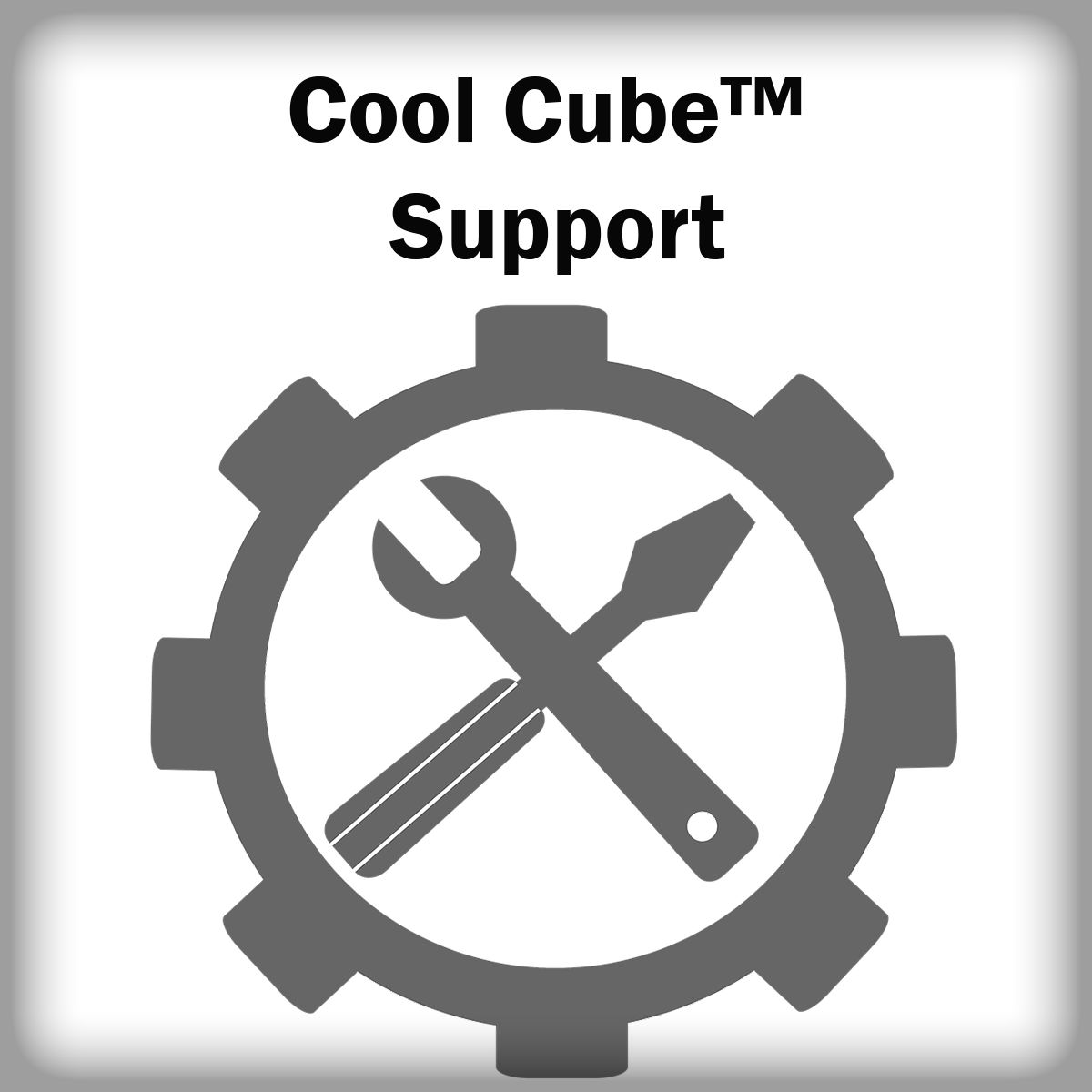

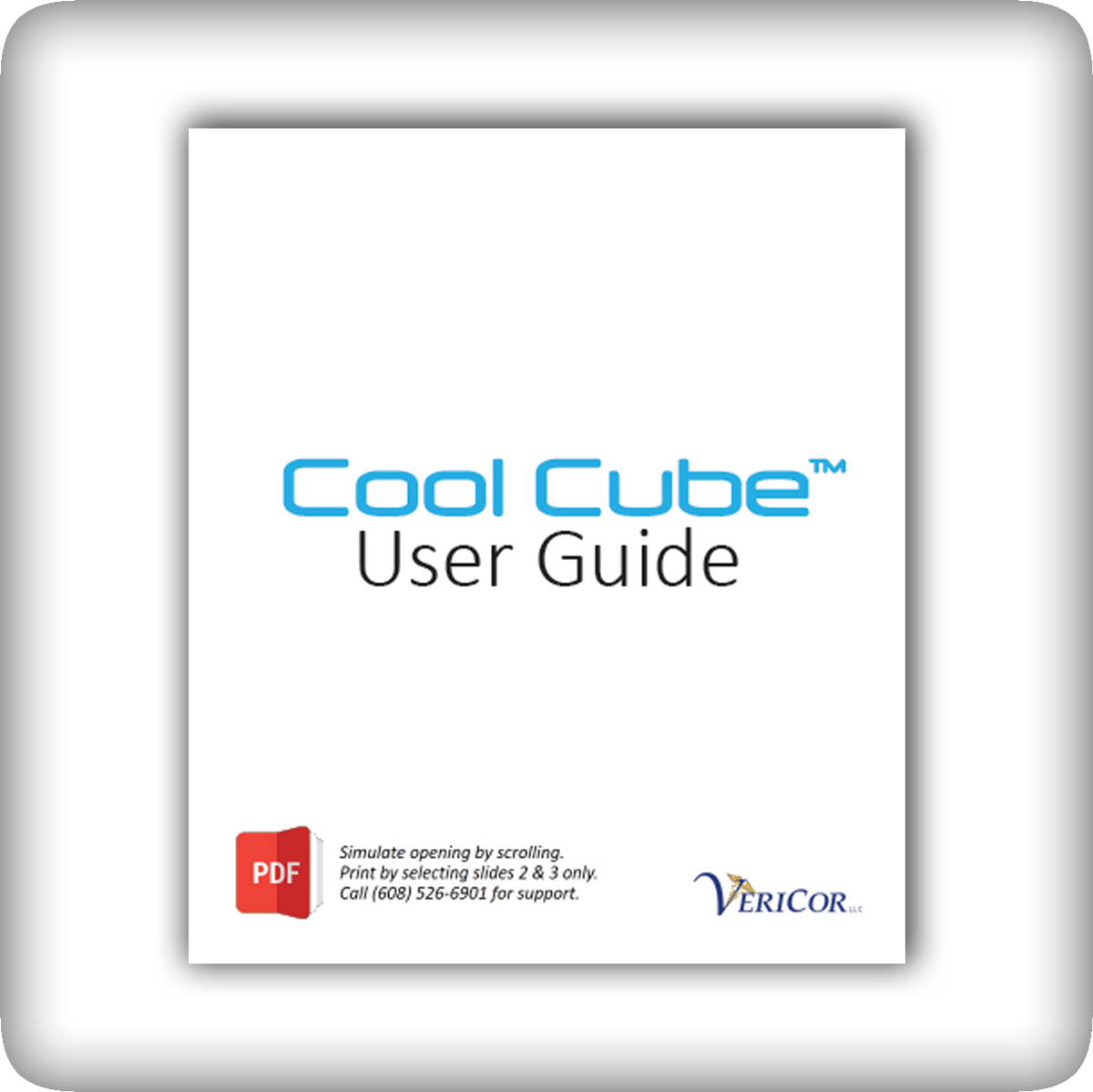
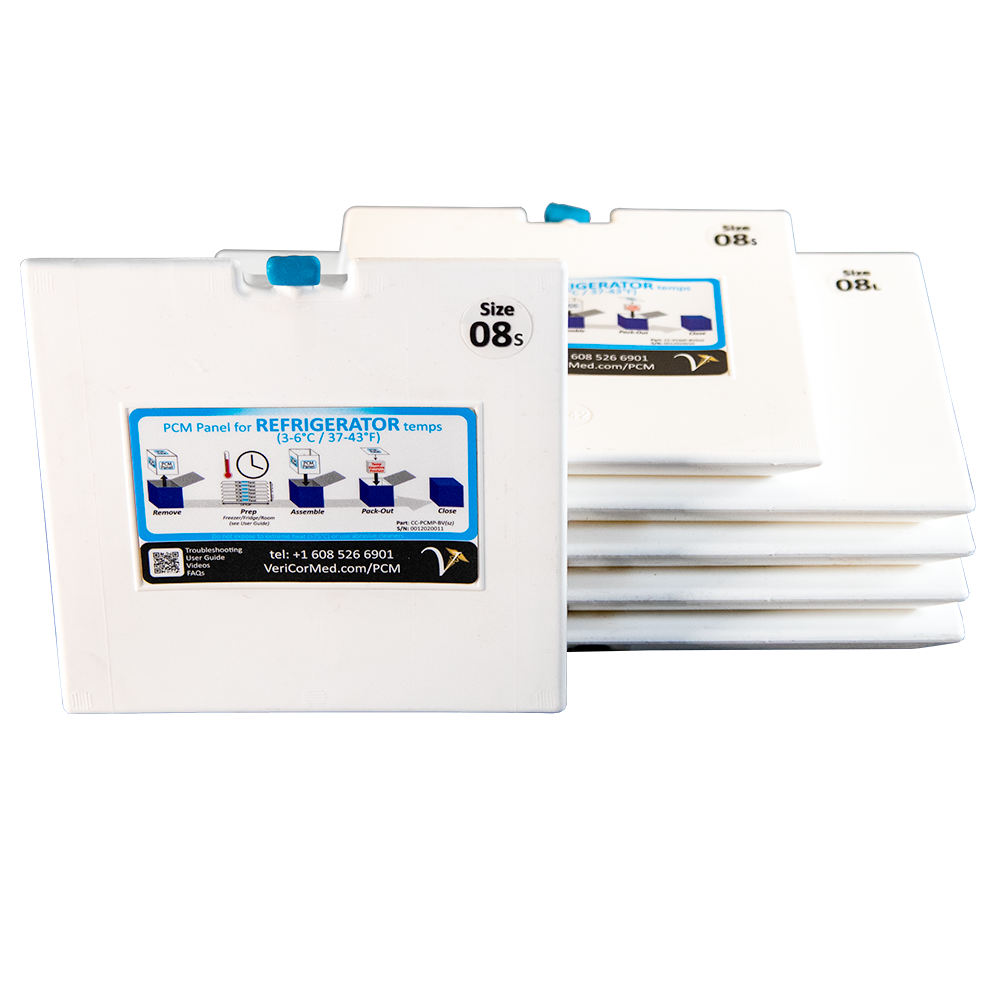
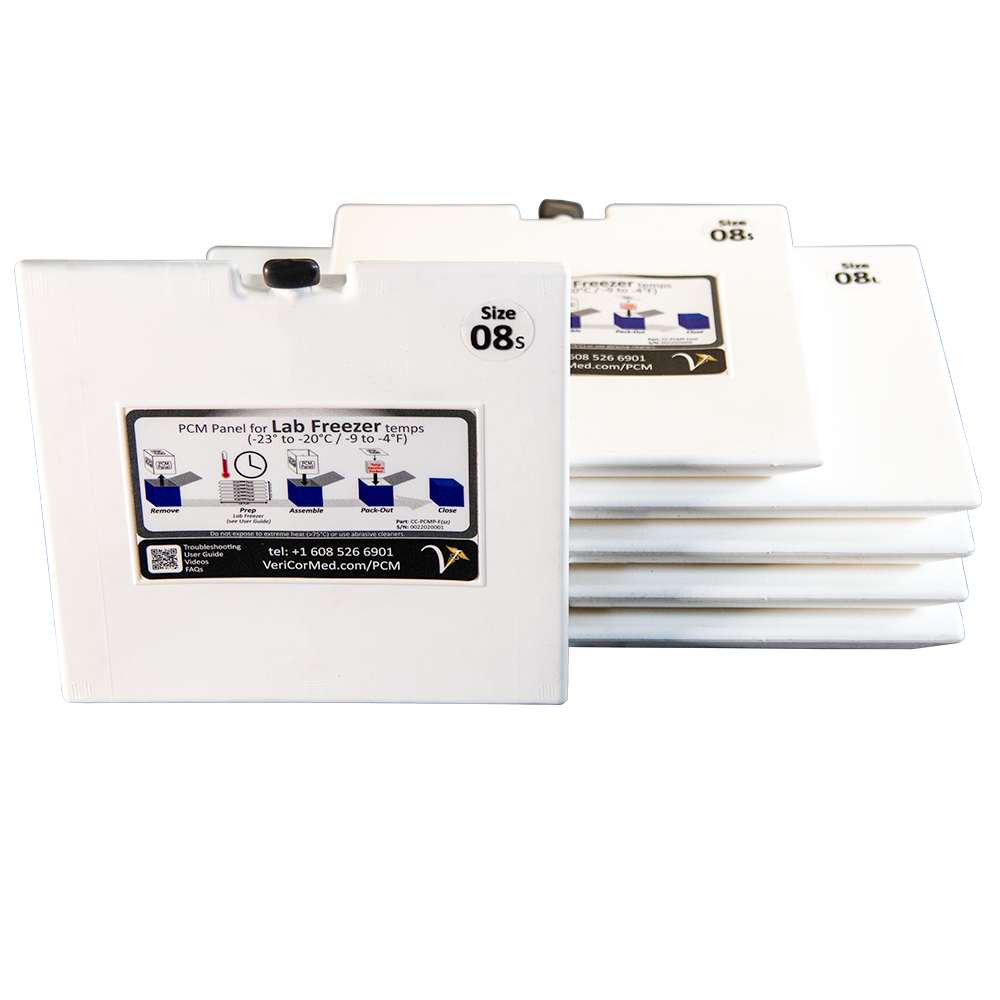
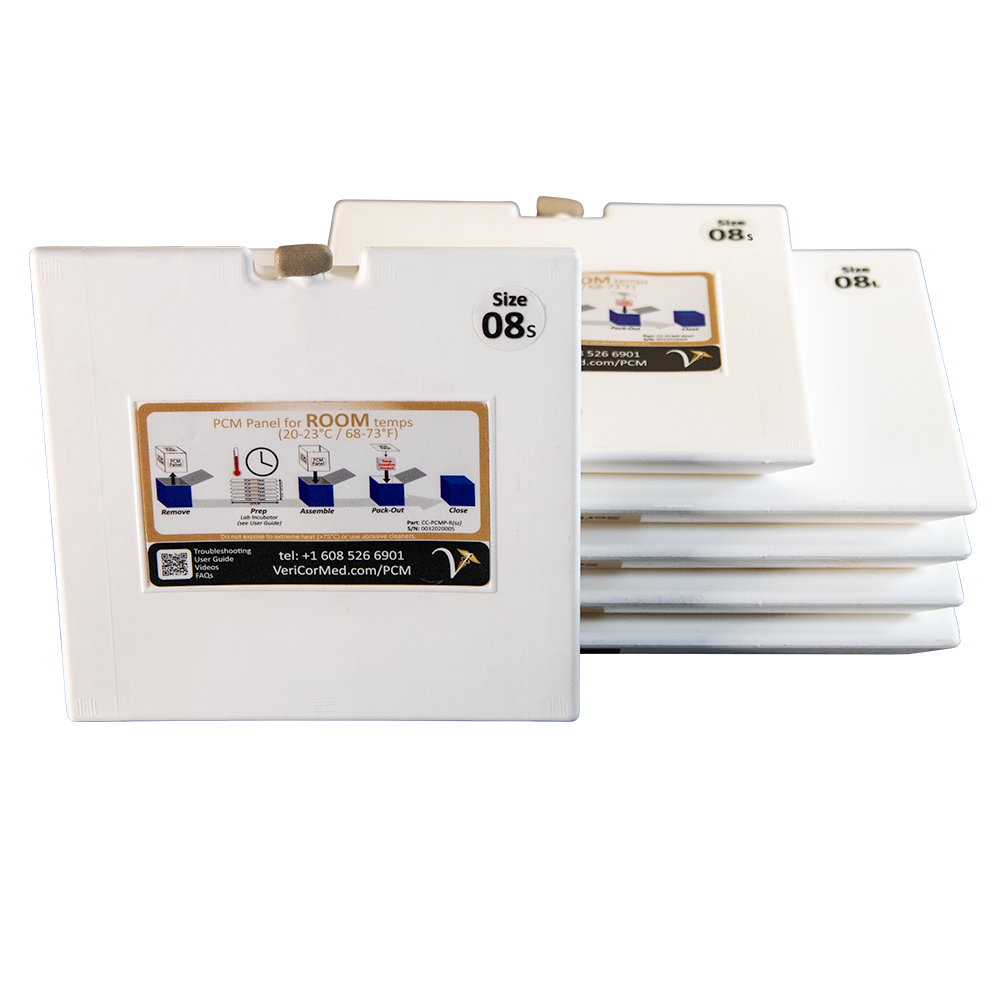
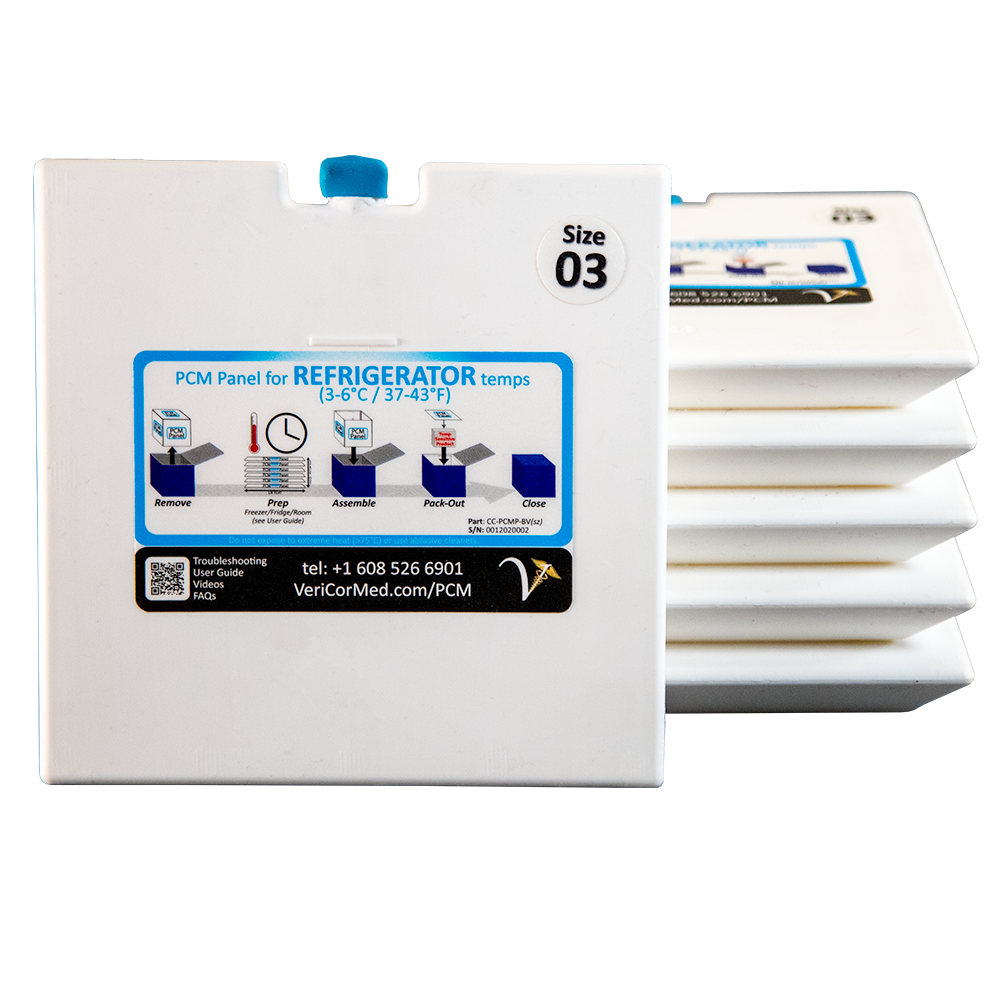
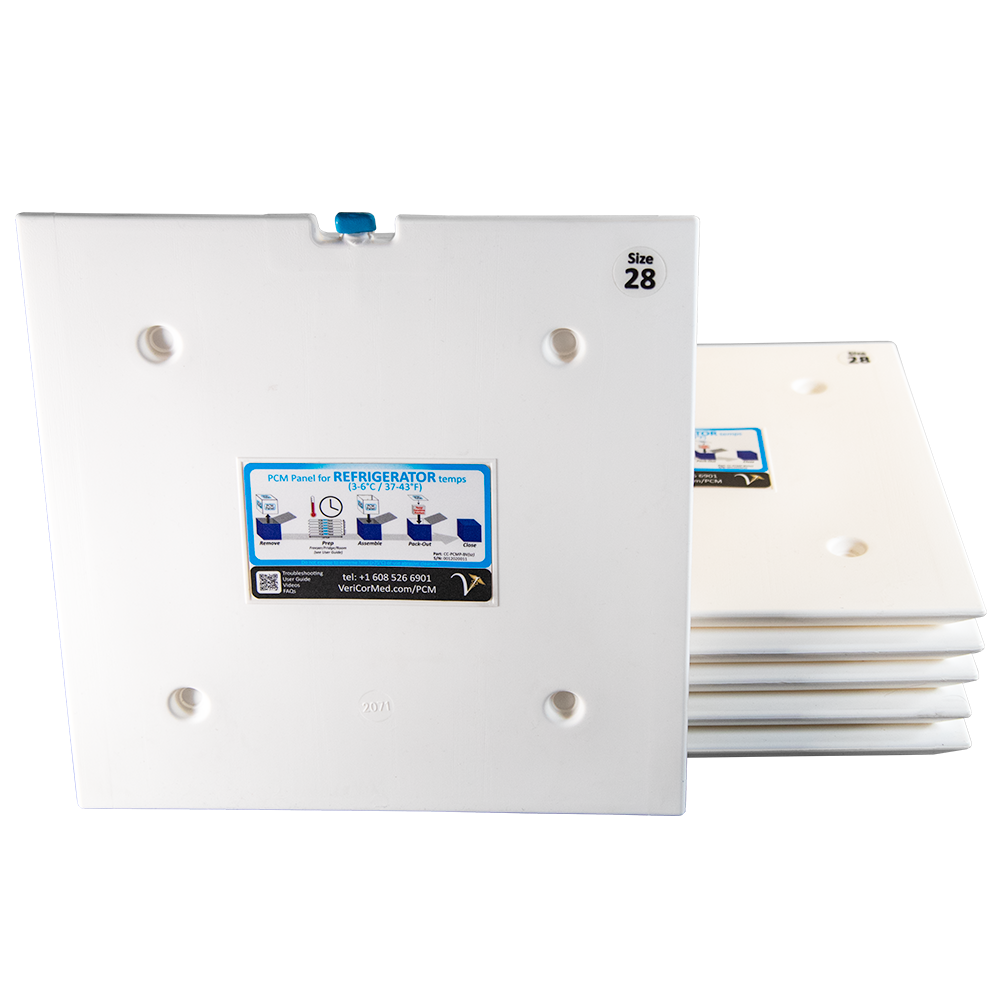
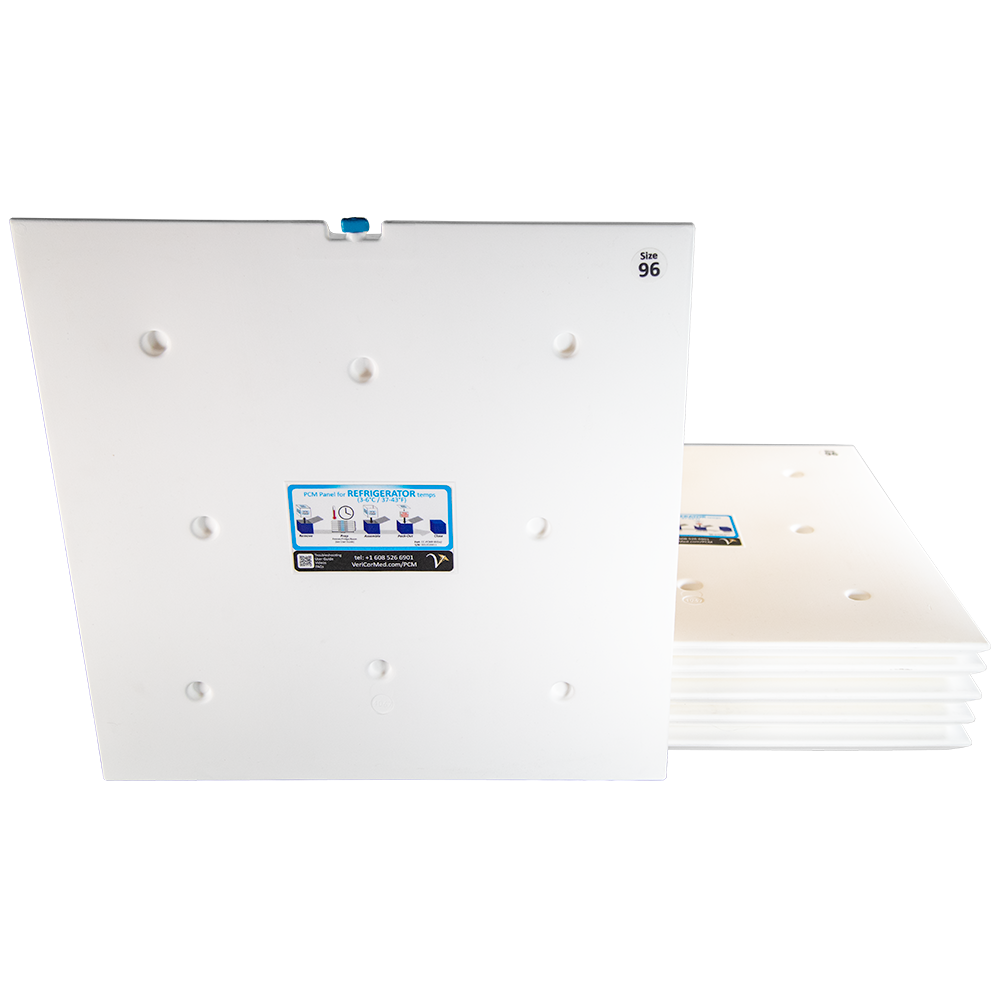
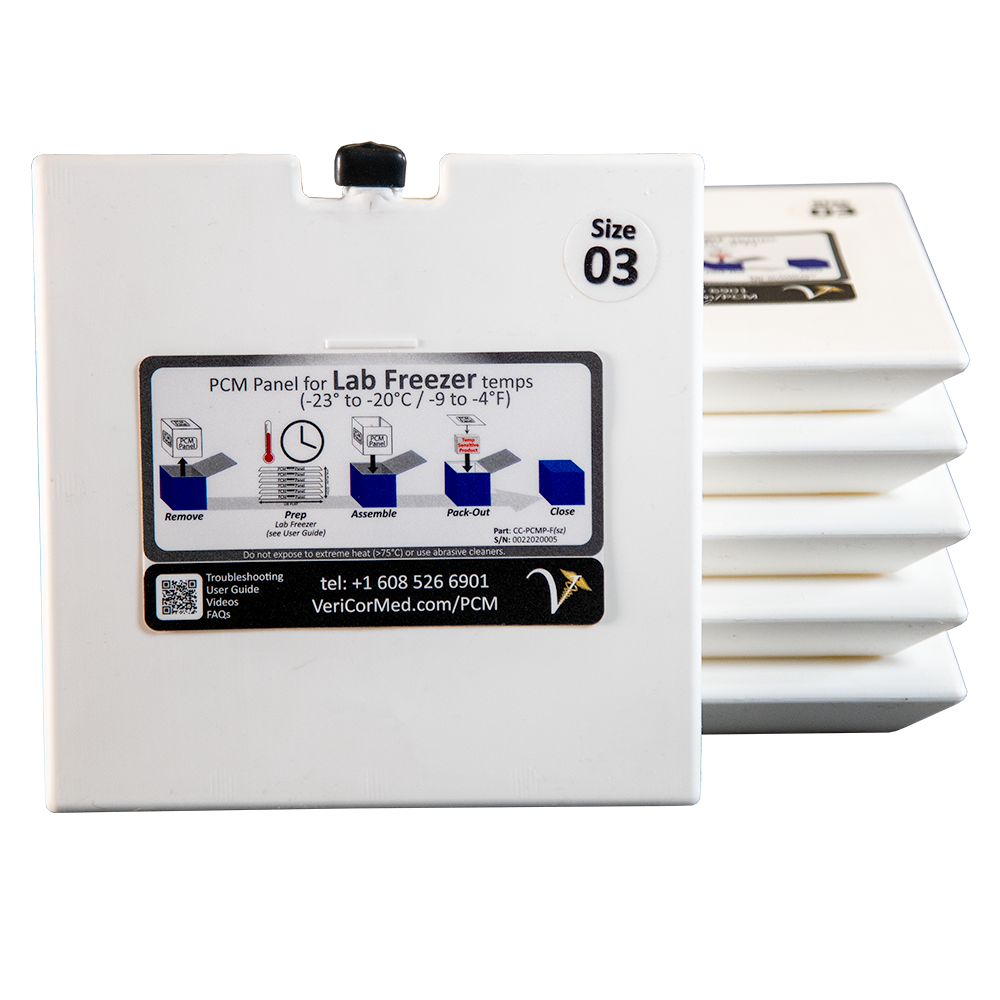
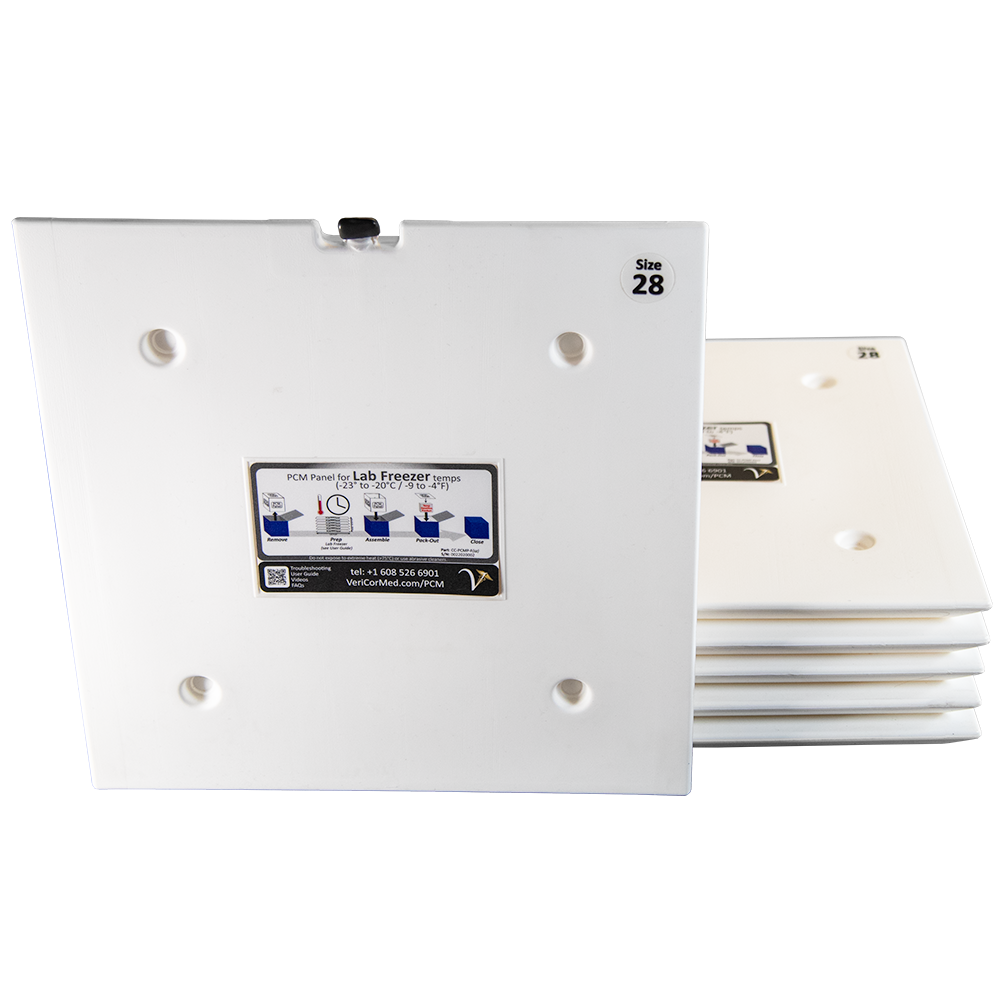
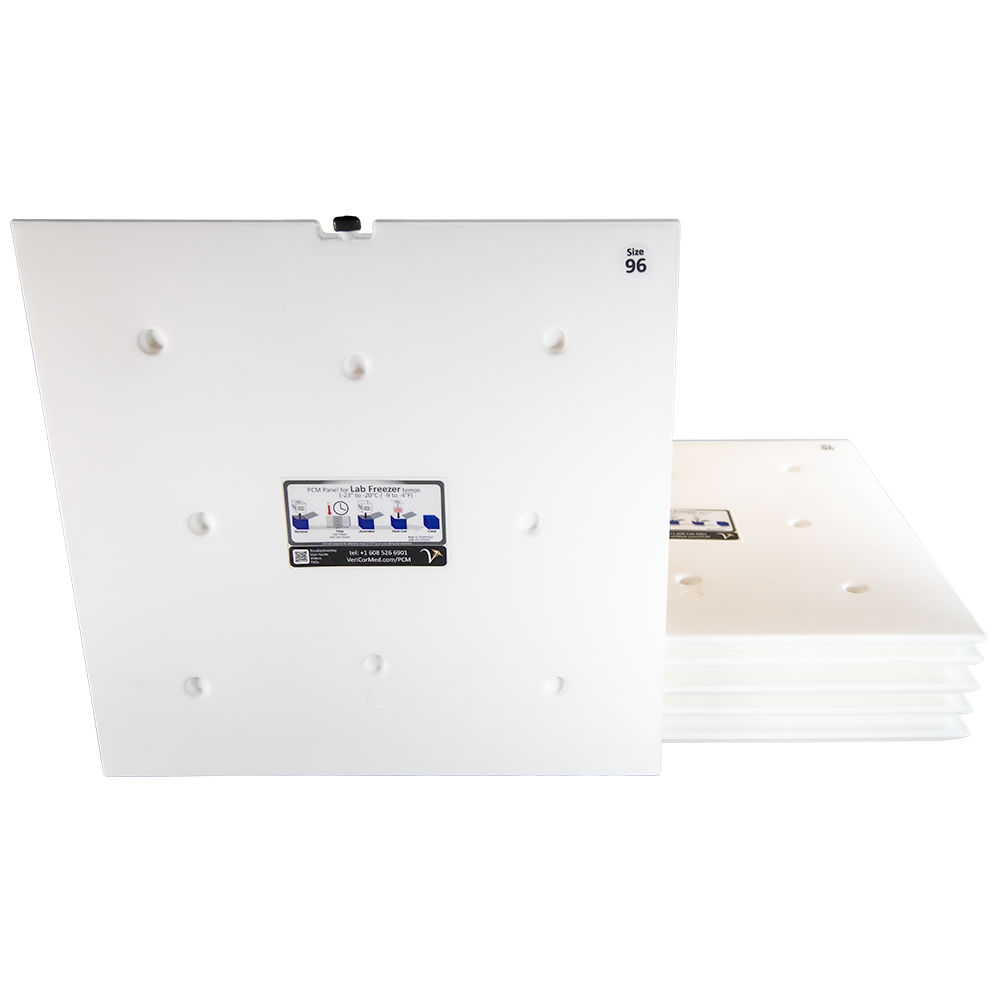
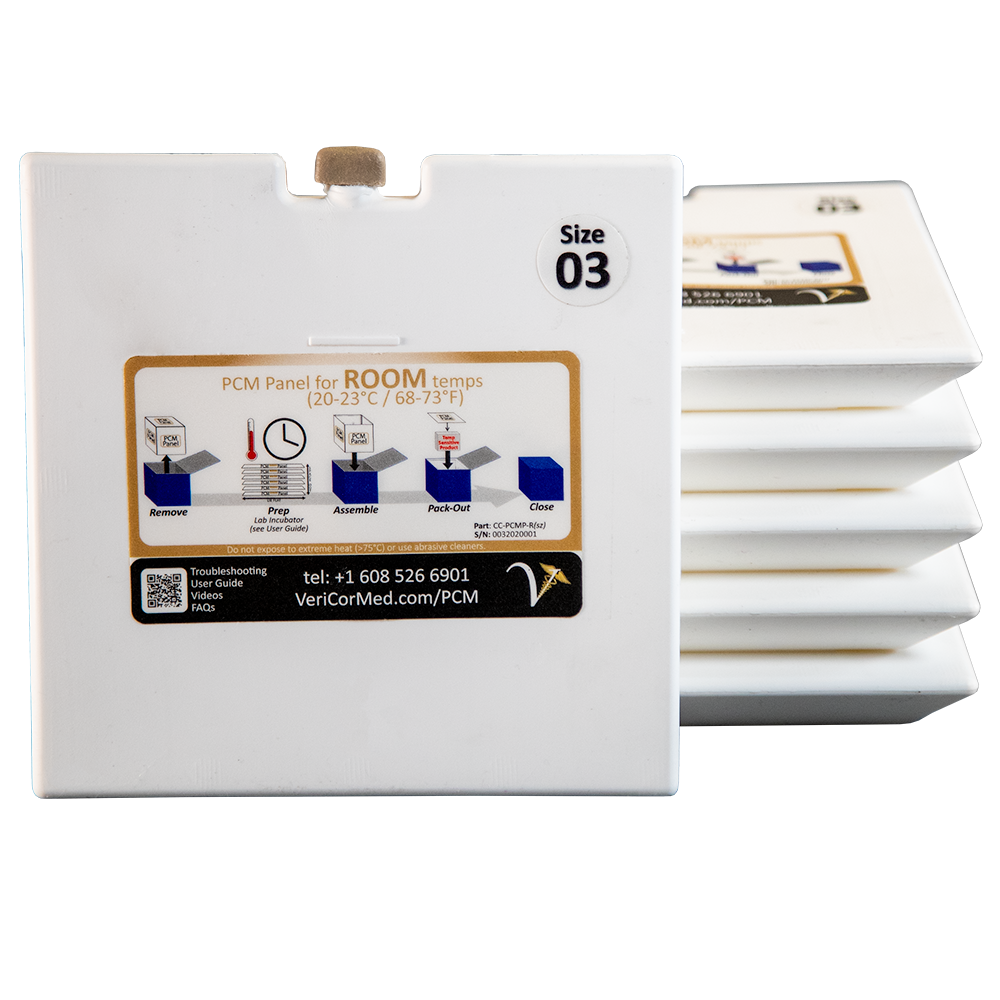
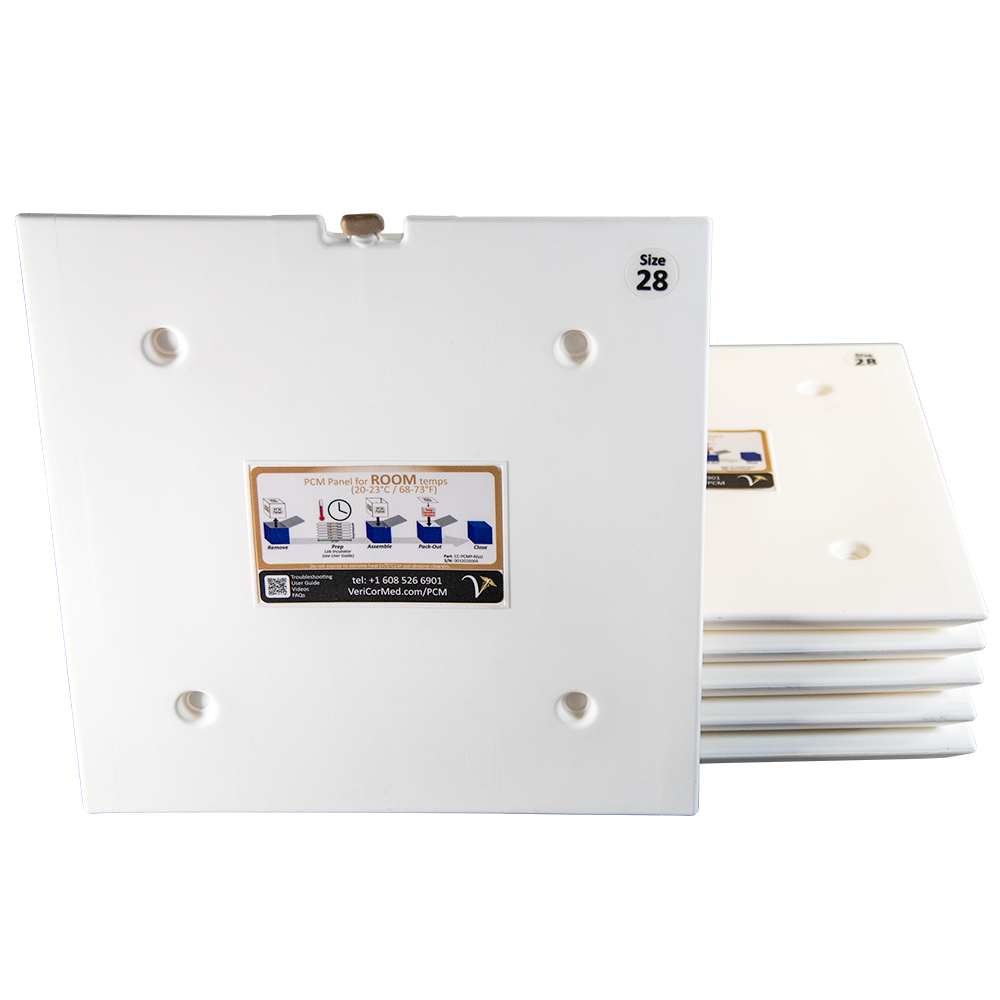
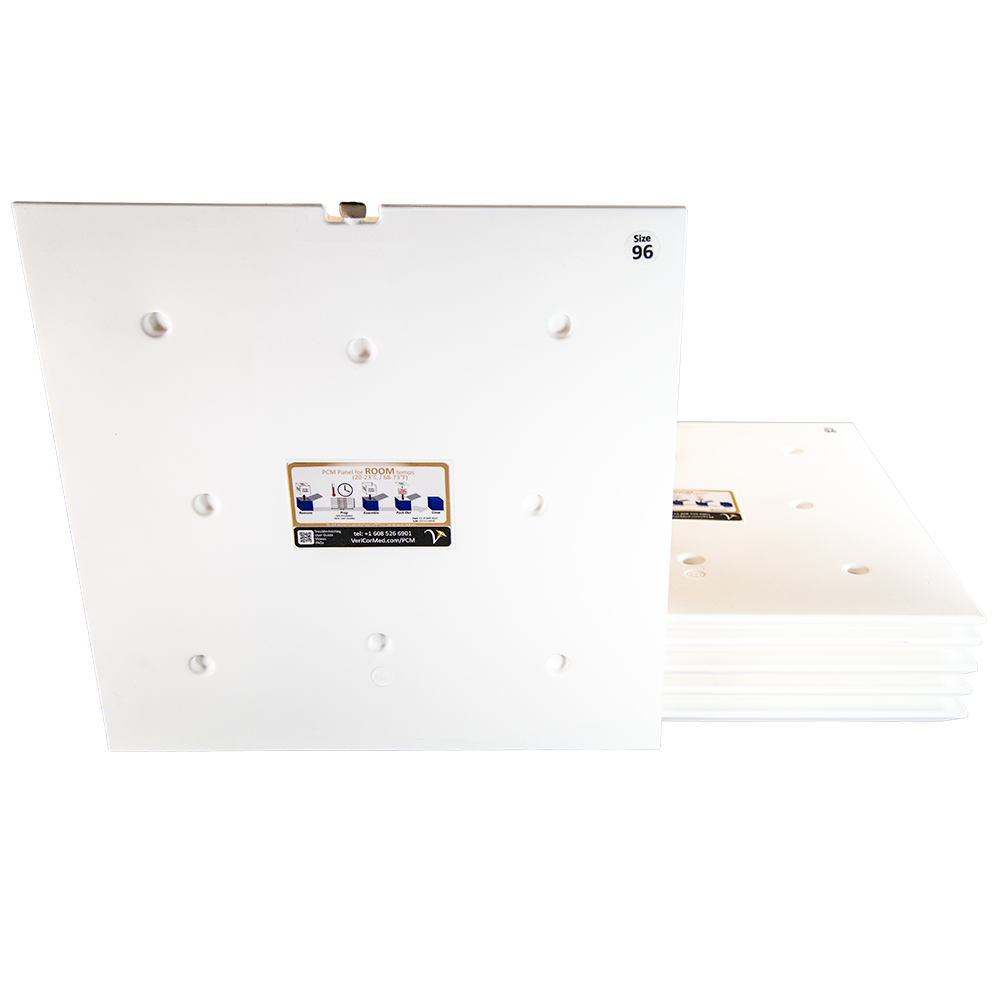



You must be logged in to post a comment.